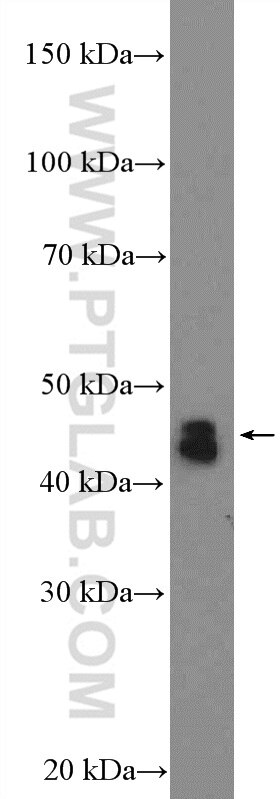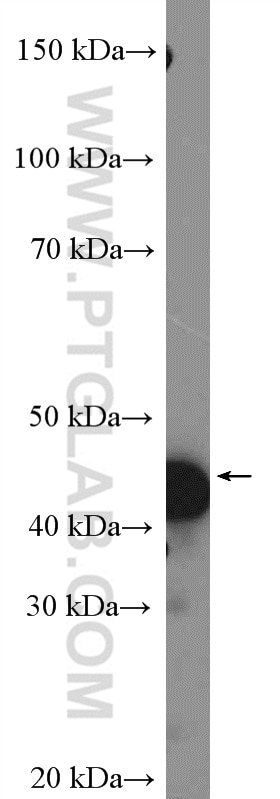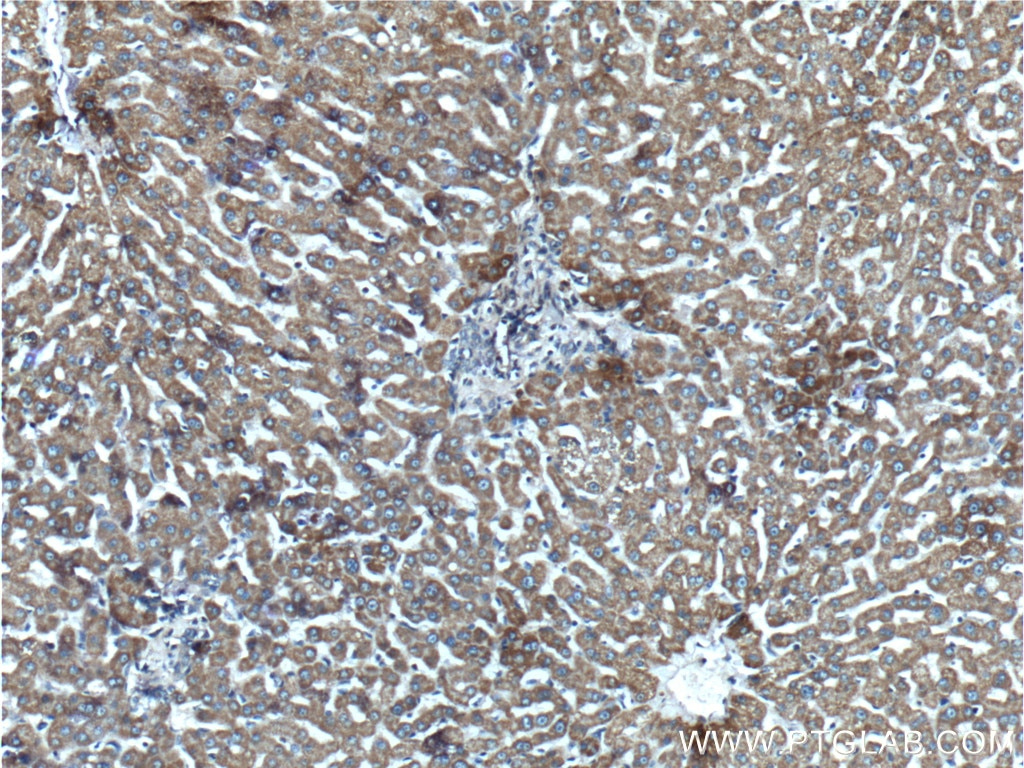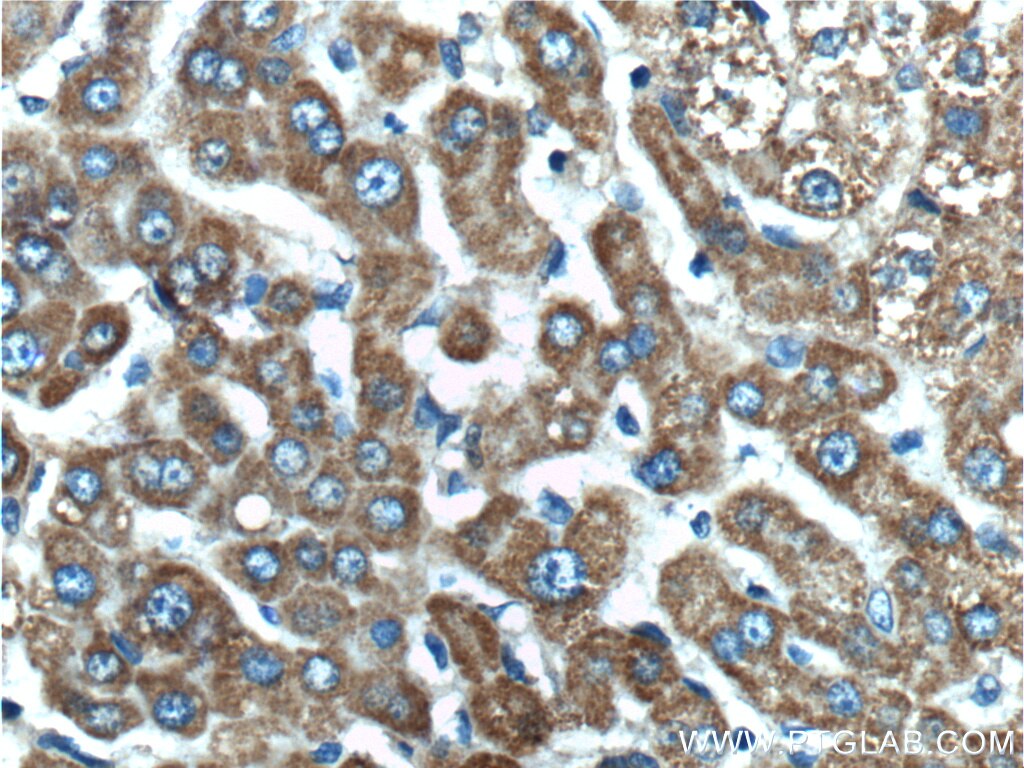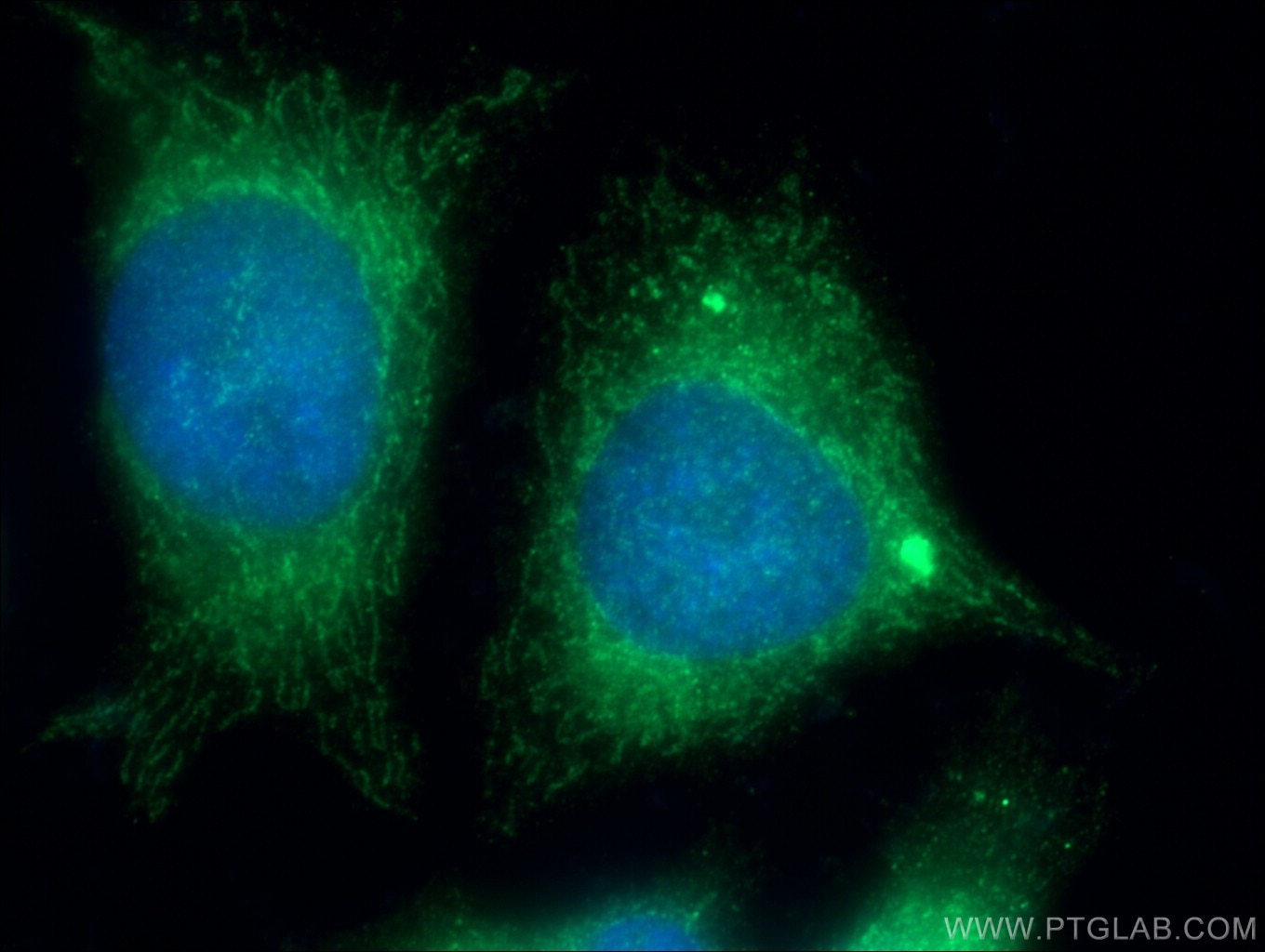Validation Data Gallery
Tested Applications
| Positive WB detected in | mouse liver tissue, HL-60 cells |
| Positive IHC detected in | human liver tissue Note: suggested antigen retrieval with TE buffer pH 9.0; (*) Alternatively, antigen retrieval may be performed with citrate buffer pH 6.0 |
| Positive IF/ICC detected in | HeLa cells |
Recommended dilution
| Application | Dilution |
|---|---|
| Western Blot (WB) | WB : 1:500-1:1000 |
| Immunohistochemistry (IHC) | IHC : 1:50-1:500 |
| Immunofluorescence (IF)/ICC | IF/ICC : 1:50-1:500 |
| It is recommended that this reagent should be titrated in each testing system to obtain optimal results. | |
| Sample-dependent, Check data in validation data gallery. | |
Published Applications
| KD/KO | See 1 publications below |
| WB | See 3 publications below |
| IHC | See 1 publications below |
Product Information
26352-1-AP targets C5orf33 in WB, IHC, IF/ICC, ELISA applications and shows reactivity with human, mouse, rat samples.
| Tested Reactivity | human, mouse, rat |
| Cited Reactivity | human, mouse |
| Host / Isotype | Rabbit / IgG |
| Class | Polyclonal |
| Type | Antibody |
| Immunogen |
CatNo: Ag23706 Product name: Recombinant human C5orf33 protein Source: e coli.-derived, PET30a Tag: 6*His Domain: 1-279 aa of BC062567 Sequence: MLLAASKVLDRLKPVIGVNTDPERSEGHLCLPVRYTHSFPEALQKFYRGEFRWLWRQRIRLYLEGTGINPVPVDLHEQQLSLNQHNRALNIERAHDERSEASGPQLLPVRALNEVFIGESLSSRASYYEISVDDGPWEKQKSSGLNLCTGTGSKAWSFNINRVATQAVEDVLNIAKRQGNLSLPLNRELVEKVTNEYNESLLYSPEEPKILFSIREPIANRVFSSSRQRCFSSKVCVRSRCWDACMVVDGGTSFEFNDGAIASMMINKEDELRTVLLEQ 相同性解析による交差性が予測される生物種 |
| Full Name | chromosome 5 open reading frame 33 |
| Observed molecular weight | 40-50 kDa |
| GenBank accession number | BC062567 |
| Gene Symbol | C5orf33 |
| Gene ID (NCBI) | 133686 |
| RRID | AB_2880487 |
| Conjugate | Unconjugated |
| Form | |
| Form | Liquid |
| Purification Method | Antigen affinity purification |
| UNIPROT ID | Q4G0N4 |
| Storage Buffer | PBS with 0.02% sodium azide and 50% glycerol{{ptg:BufferTemp}}7.3 |
| Storage Conditions | Store at -20°C. Stable for one year after shipment. Aliquoting is unnecessary for -20oC storage. |
Protocols
| Product Specific Protocols | |
|---|---|
| IF protocol for C5orf33 antibody 26352-1-AP | Download protocol |
| IHC protocol for C5orf33 antibody 26352-1-AP | Download protocol |
| WB protocol for C5orf33 antibody 26352-1-AP | Download protocol |
| Standard Protocols | |
|---|---|
| Click here to view our Standard Protocols |
Publications
| Species | Application | Title |
|---|---|---|
bioRxiv Mitochondrial NADK2-dependent NADPH controls Tau oligomer uptake in human neurons
| ||
FASEB J G-protein-coupled estrogen receptor 1 promotes peritoneal metastasis of gastric cancer through nicotinamide adenine dinucleotide kinase 1-mediated redox modulation | ||
Nat Cardiovasc Res Mitochondrial NAD+ deficiency in vascular smooth muscle impairs collagen III turnover to trigger thoracic and abdominal aortic aneurysm |

